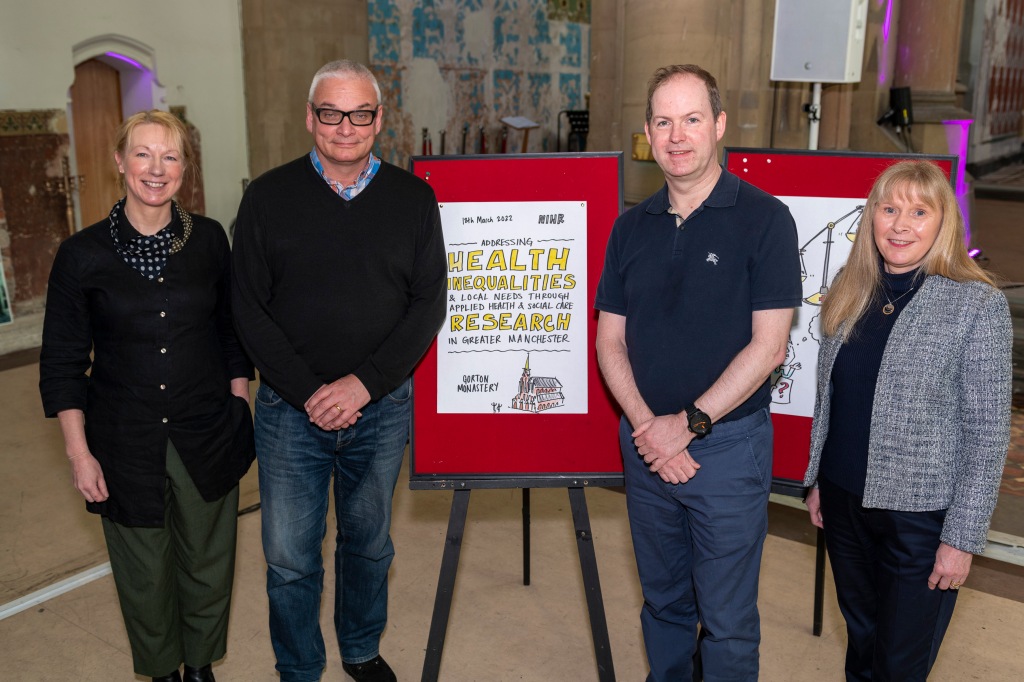
Professor Nav Kapur and Professor Roger Webb are co-leads for the ‘Preventing suicide and self-harm’ theme at the National Institute for Health and Care Research Greater Manchester Patient Safety Research Collaboration (NIHR GM PSRC). Here, they introduce the new theme.
“People at risk of suicide and self-harm are some of the most vulnerable and improving the safety of their care is essential. Patient safety research is a critical part of preventing self-harm and suicide in mental health services. Our new research programme is dedicated to making a difference to this area of healthcare by identifying, refining, and evaluating new ways of delivering services.
The work that we plan to do will build on what we have discovered about provision of psychosocial assessment following a self-harm episode and enhanced family involvement for patients in specialist mental health services.
Our research team in the GM PSRC includes people from a broad range of academic and clinical disciplines, including psychiatry, clinical psychology, primary care, health economics, health services research, epidemiology, statistics, informatics, and behavioural science.
Designing our programme of research
Researching this topic can be especially challenging. When we were designing and developing our programme of research, we worked with people with lived experience and healthcare staff to gain a deeper understanding of some of these challenges.
Therefore, our research aims to improve patient safety by identifying interventions that help to prevent self-harm and suicide in mental health services. We recognise that there are many different ways to deliver mental health services and that some approaches may be better at reducing the risks of self-harm and suicide than others.
For example, our research will examine innovations in specialist mental health services, in secondary hospital emergency departments, and in general practice. We are committed to identifying which approaches have the most potential to reduce the risks of self-harm and suicide in these different healthcare settings.
Delivering our programme of research
To meet our objectives, we will be working closely with service providers and patients, carers and healthcare staff to investigate the most effective interventions and refine them further to increase their potential impact. This will involve large-scale studies which include several services and a high number of patients to ensure the results are relevant to a wide range of mental health settings. As a result, we aim to better understand any potential barriers to successfully rolling out the interventions that we’ll be testing. This type of study can also provide us with valuable insights into how the interventions can be adapted to work well across different mental health services and settings.
Impact and outcomes
Our research has the potential to make a significant difference to patient safety. By identifying and implementing effective interventions, we can help prevent suicide and self-harm and improve the outcomes for people who are experiencing mental health illness. We want to assure affected individuals that there is support available and encourage them to seek help if they need it.
At the heart of our research is the recognition that mental ill health can affect anyone, and that everyone deserves access to high-quality care. Inequality in mental health services is a complex issue and can be influenced in various ways, including by social, economic, and cultural factors, as well as differences in how services are offered. For instance, people from ethnic minority backgrounds may be more likely to experience stigma and discrimination when accessing mental health services, while people from socially disadvantaged backgrounds may face other barriers that hinder their access to treatment.
We are committed to identifying interventions that work for everyone, regardless of their background or circumstances. By identifying the most effective interventions and refining them, we can work towards reducing the risks of suicide and self-harm, improving patient safety, and ensuring that everyone has access to the effective care that they need.”











